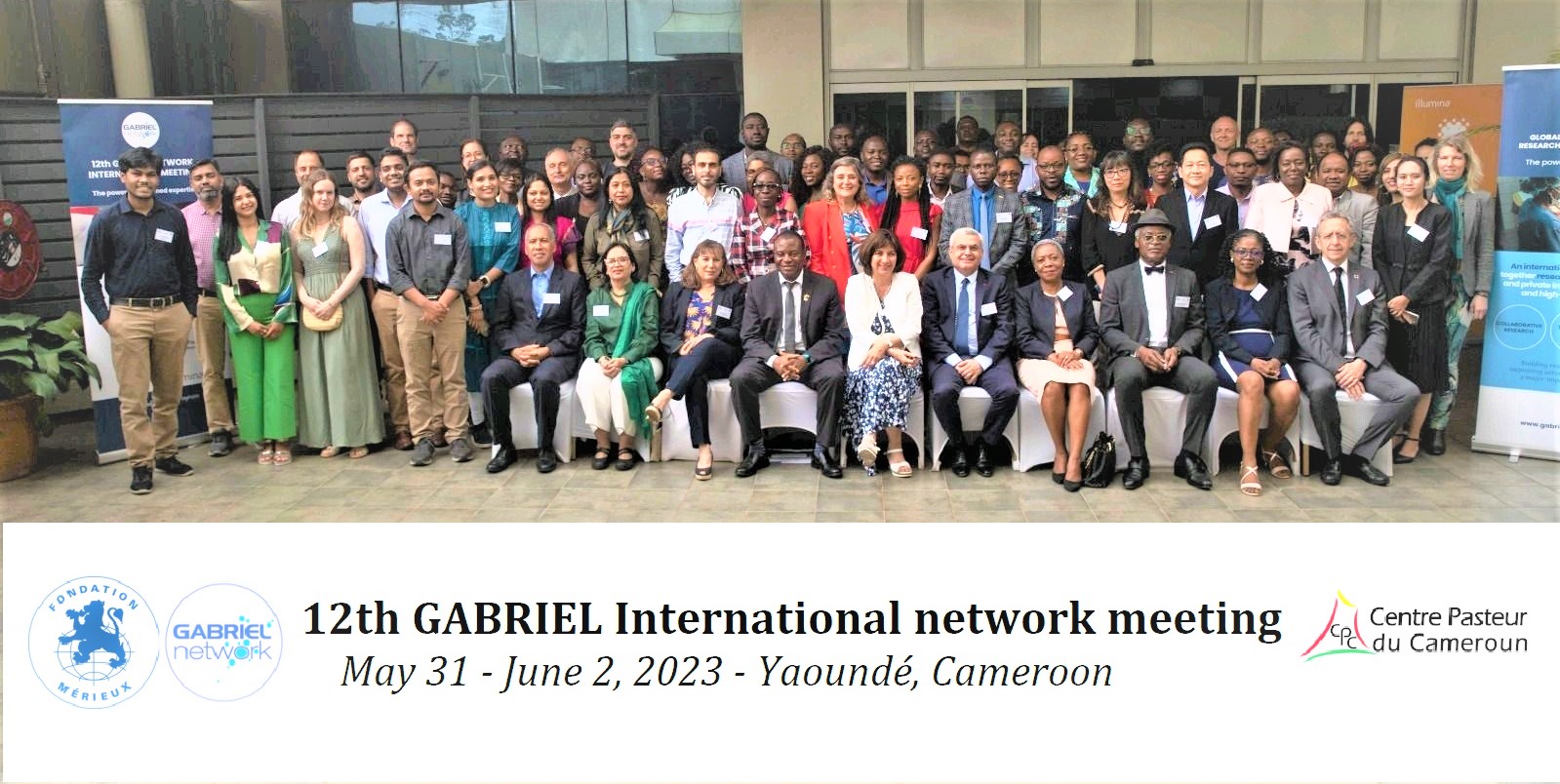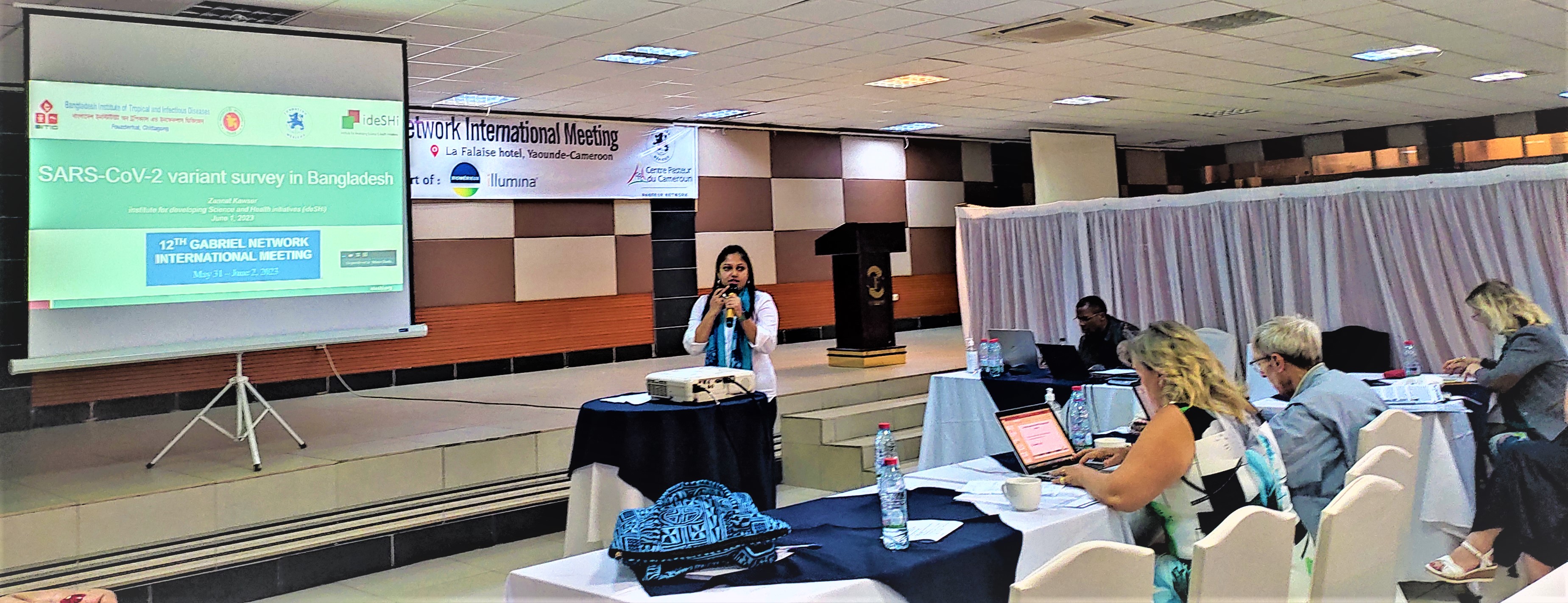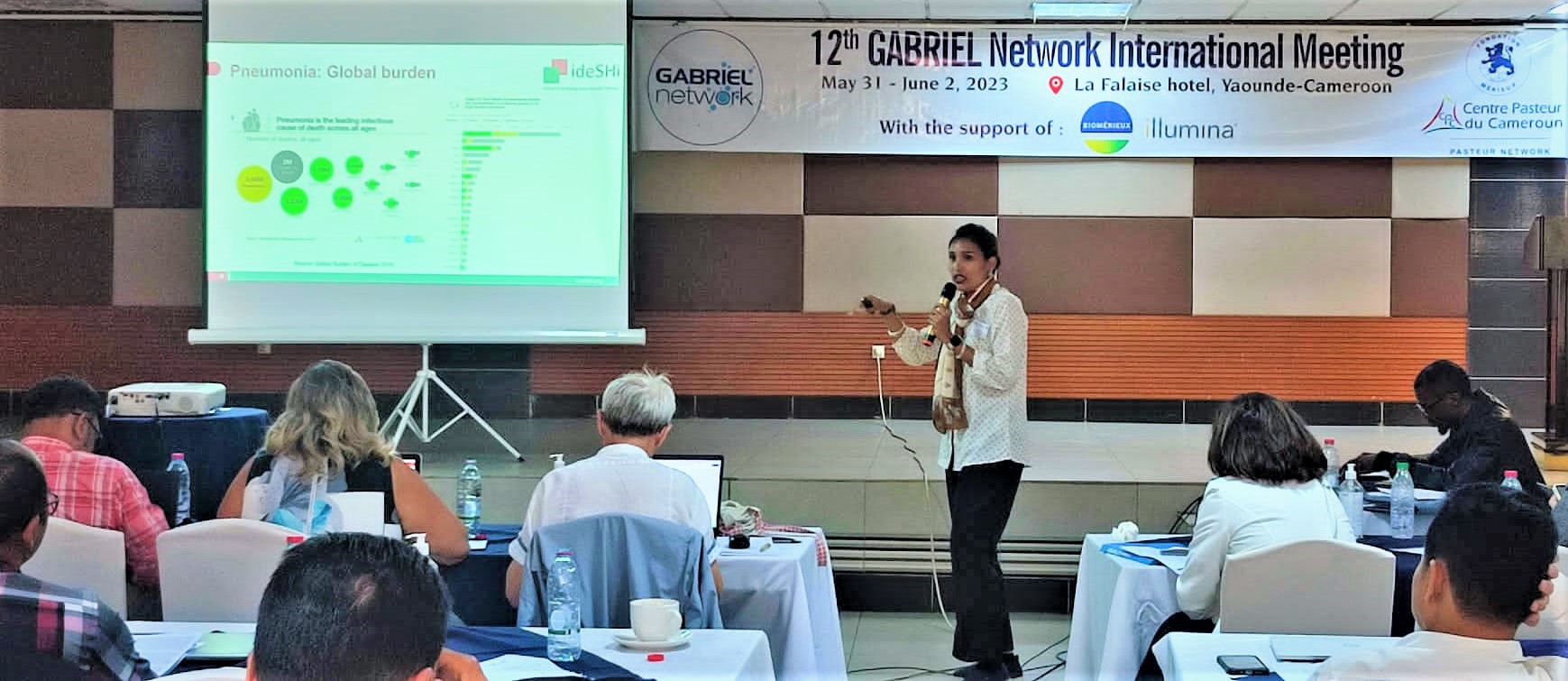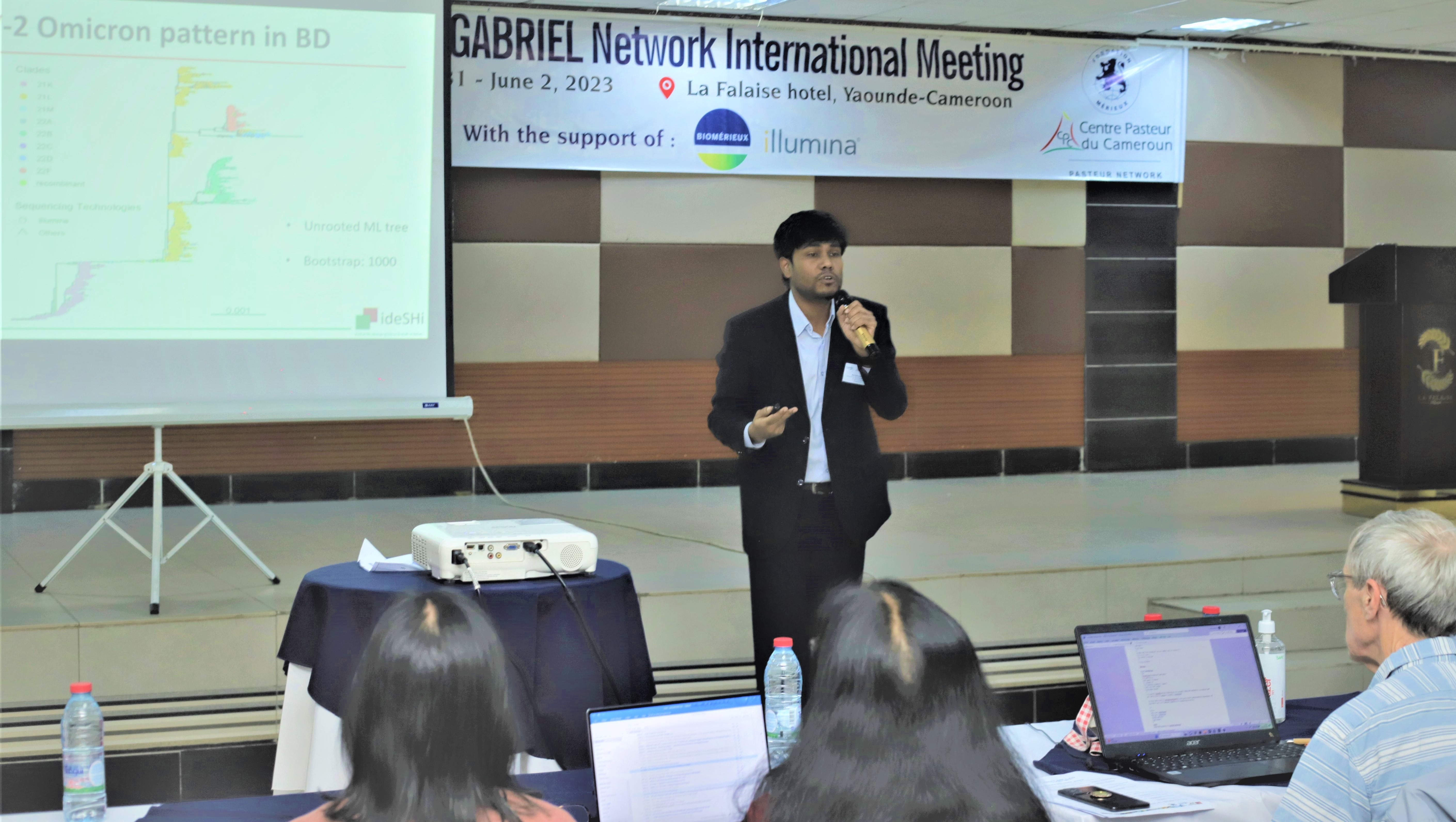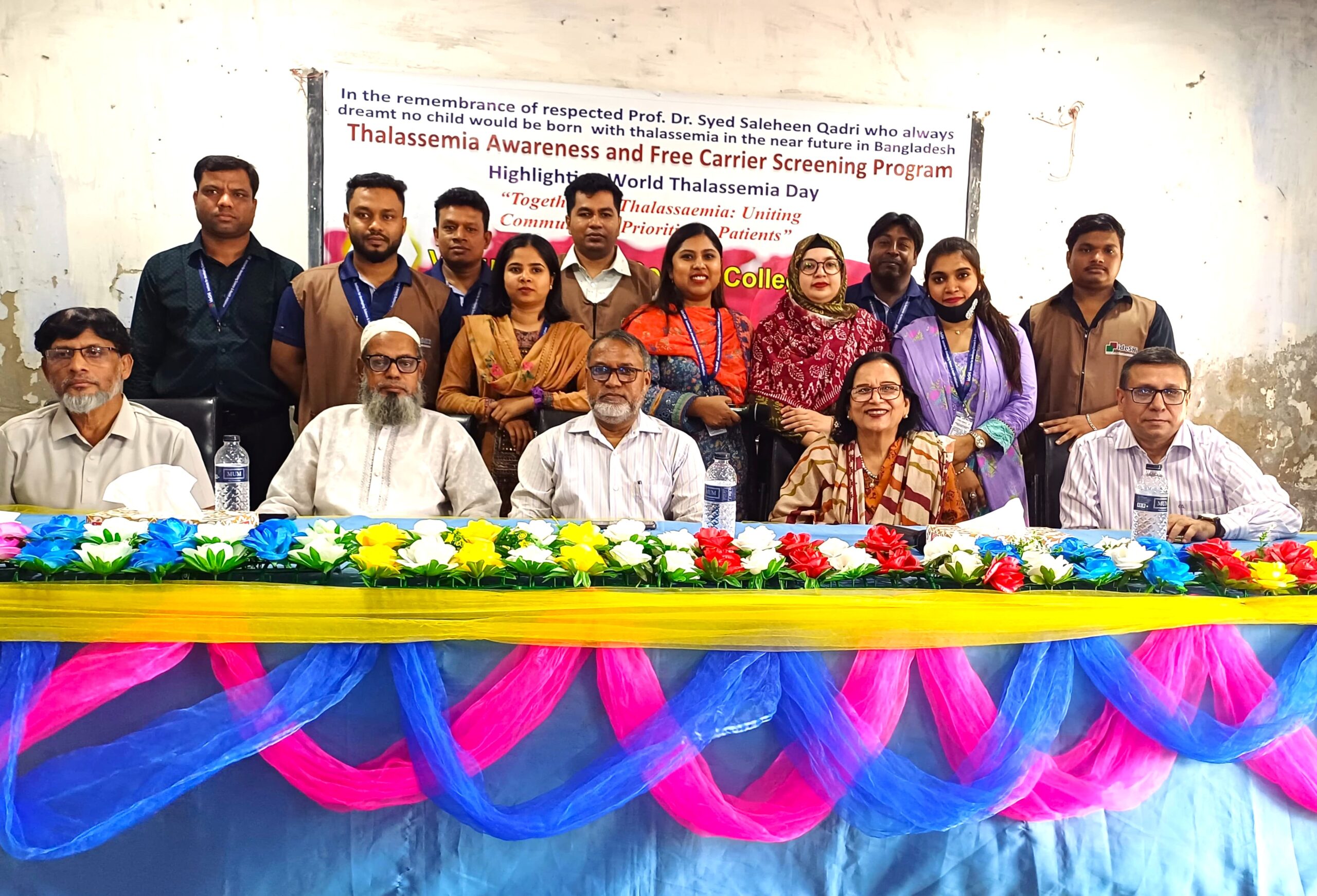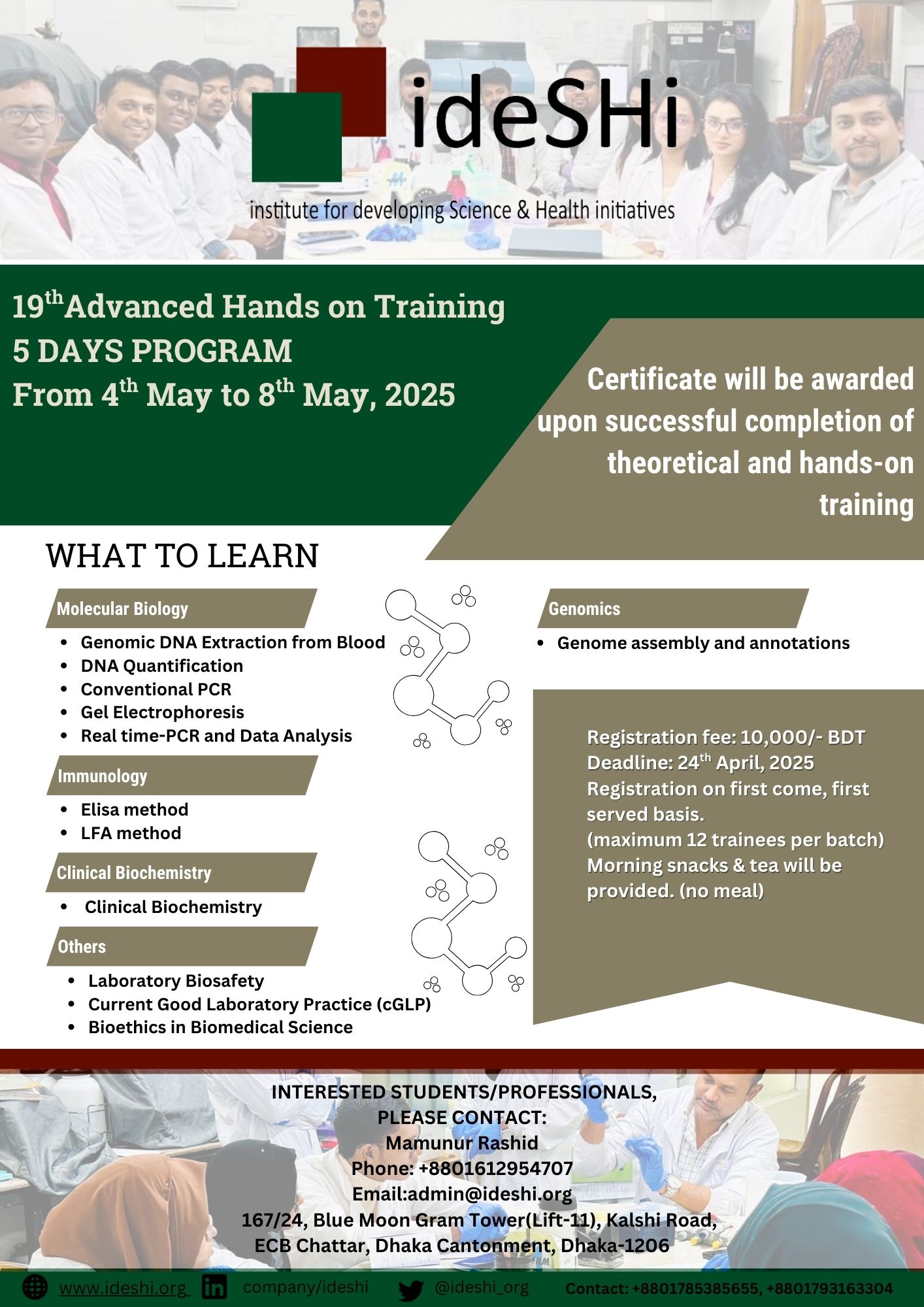ideSHi has participated 12th GABRIEL International Network Meeting. Some of ideSHi’s young Scientist and Researcher has represented their presentation.
Dr. Zannat Kawser: described the objectives of the SARS-CoV-2 variant survey: to evaluate the presence of VOCs and VOIs in specimens collected from different regions of Bangladesh, and to find epidemiological or clinical characteristics associated with the viral genetic background. In this study SARS-CoV-2 variant screening was done by a panel of multiplex, mutant-specific RT-PCR assays, one of the best compromise between cost, turnaround time, and precision. Such a rapid and accessible method is essential in the context of pandemic response requiring rapid strain typing to guide both treatment decisions and public health measures. This research provides cross-disciplinary collaboration opportunities for knowledge and the transfer of skills between Mérieux Foundation, ideSHi, BITID and IEDCR
Ms. Sanchita Kar: presented the study findings entitled “ Role of bacteria and their antimicrobial resistance pattern (AMR) in Community Acquired Pneumonia (CAP) in Bangladesh. Here she focused on bacterial etiology from different samples, circulating S. pneumoniae serotypes, AMR pattern of predominat bacteria. She also described the association of biomarkers with disease severity. This study is a part of continuous monitoring of antimicrobial resistance as well as pneumococcal serotypes for the appropriate management of CAP.
Mr. Abu Bakar Siddik : The leading infectious cause of death in children worldwide is lower acute respiratory infection (LARI), particularly pneumonia. We enrolled a total of 538 acute respiratory infection (ARI) cases according to WHO criteria and age-sex matched 514 controls in the Forcibly Displaced Myanmar National (FDMN) refugee camps in Cox’s Bazar, Bangladesh, between June 2018 and March 2020 to investigate the role of bacteria, viruses, and their co-infection patterns and observe Streptococcus pneumoniae (S. pneumoniae) serotype distribution.
According to the etiological findings, children <5 years of age have a higher bacterial positivity (90%) and viral positivity (34%) in nasopharyngeal samples (NPS) compared to those >5 years of age, in both ARI cases as well as for the control group. Among the bacteria, S. pneumoniae was predominant in both cases and controls (85% and 88%). Adenovirus (ADV) (34), influenza virus A and B (32,23), and respiratory syncytial virus (RSV) (26) were detected as the highest number among the viruses tested for the ARI cases. The total number of viruses was also found higher in <5 years of age group. Within this group, positive correlation was observed between bacteria and viruses but negative correlation was observed between bacteria. Both single and co-infection for viruses were found higher in the case group than the control group. However, co-infection was significantly high for Streptococcus aureus and Haemophilus influenzae b (p<0.05). Additionally, semi-quantitative bacterial and viral load was found higher for the ARI cases over control considering Cycle threshold (Ct)<30. Pathogen identification from blood specimens was higher by qRT-PCR than blood culture (16% vs 5%, p<0.05). In the S. pneumoniae serotype distribution, the predominant serotypes in ARI cases were 23F, 19A, 16F, 35B, 15A, 20 and 10F, while 11A, 10A, 34, 35A and 13 serotypes were predominant in the control group. Pathogen correlation analysis showed RSV positively correlated with human metapneumovirus (HMPV), S. aureus and H. influenza b while S. pneumoniae was negatively correlated with other pathogens in <5 years age group of ARI cases. However, in >5 years age group, S. aureus and H. influenza b were positively correlated with IFVs, and S. pneumoniae was positively correlated with HMPV and ADV. Logistic regression data for viruses suggested among the respondents in cases were about 4 times more likely to be RSV positive than the control. Serotype distribution showed 30% for PCV10 serotypes, 41% for PCV13 and 59% for other serotypes. Also, among the 40 serotypes of S. pneumoniae tested, the serotypes 22F, Sg24, 9V, 38, 8, and 1 showed strong positive correlation with viruses in the case group whereas in the control group it was predominant for serotypes 14, 38, 17F and 39 ARI cases were prevalent mostly in monsoon, post-monsoon, and winter periods, and peaked in September and October. Overall these collaborative study between ideSHi and Merieux Foundation provide region-specific etiological data and findings, particularly for crisis settings representing the FDMNs in Cox’s Bazar, Bangladesh, are crucial for disease management and disease prevention control as well as immunization strategies more generally in humanitarian crisis settings.
Mr. Saikt Rahman: representing the institute for developing Science and Health Initiatives in Bangladesh spoke about the evolutionary pattern of SARS-CoV-2 Omicron VOC in the aspect of Bangladesh. Omicron possesses few characteristic mutations, especially in the S gene and Receptor Binding Domain (RBD) of the S gene, which increases the transmission and adaptability of the Omicron VOC. The purpose of this study was to understand the evolutionary pattern of Omicron VOC, predict its adaptation in Bangladesh, and identify positively selected sites related to Omicron adaptability by calculating the ratio of non-synonymous (dN) and synonymous (dS) mutation sites of SARS-CoV-2 genome.
Phylogenetic Analysis by Maximum Likelihood (PAML) which is used to study sequence evolution, was applied to calculate the positive selection in each protein-coding gene and also to calculate the disproportional selection pressure among different domains of the S gene of Omicron. In determining the natural selection process acting on Omicron, it was found that the S gene, M gene and ORF6 gene showed evidence of positive selection. Especially, the S gene showed more confident evidence of positive selection.
This study concludes that natural selection is the driving force of Omicron evolution in Bangladesh, that the S gene is a focal point for natural selection, and that, in the future, accumulating naturally evolving beneficiary mutations, and future VOCs, could emerge. Future vaccine strategies should focus on those sites of natural selection and on heavily mutated Omicron strains.

